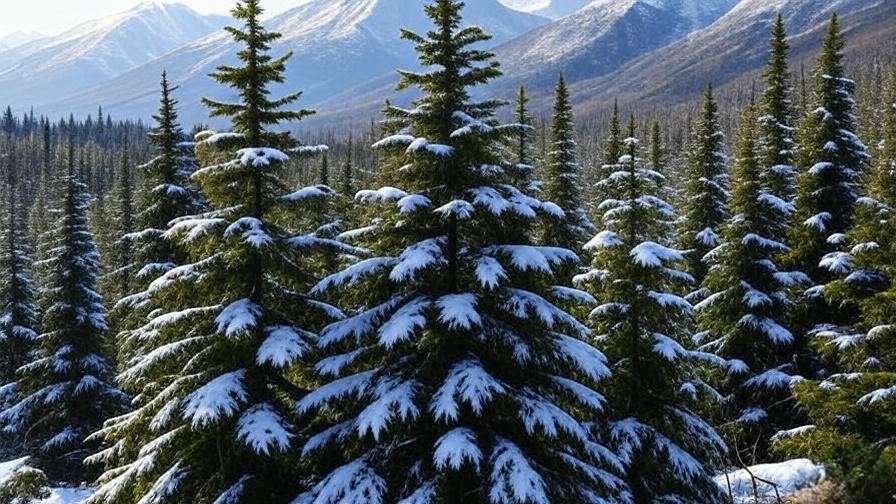Imagine standing in your Alaskan backyard, surrounded by towering spruce and graceful birch, their branches swaying in the crisp northern breeze. These Alaska trees are more than just scenery—they’re survivors, thriving in one of the planet’s toughest climates. But growing and maintaining healthy trees in Alaska’s extreme conditions can feel like a daunting task. Whether you’re a homeowner, gardener, or arborist, this guide unlocks the secrets to nurturing Alaska trees that flourish despite short growing seasons, frozen soils, and harsh winters. Backed by over a decade of northern horticulture experience and insights from Alaska’s top forestry experts, this article delivers actionable, expert advice to help your trees thrive.
Alaska’s unique environment demands specialized care for trees to reach their full potential. From permafrost challenges to nutrient-poor soils, understanding how to support Alaska trees is key to creating a vibrant landscape. In this comprehensive guide, we’ll cover the best species, planting techniques, care tips, and solutions to common problems—all tailored to Alaska’s rugged conditions. Let’s dive in and grow trees that stand tall in the Last Frontier! 🌟
H2: Understanding Alaska’s Unique Climate and Its Impact on Trees 🌬️
Alaska’s climate is unlike anywhere else, and it profoundly shapes how trees grow. To care for Alaska trees effectively, you need to understand the environmental factors at play.
H3: The Challenges of Alaska’s Growing Seasons
Alaska’s growing season is short—typically 90 to 120 frost-free days in most regions, according to the University of Alaska Fairbanks. This brief window limits the time trees have to establish roots and grow. Winters are long and brutal, with temperatures plunging below -40°F in interior regions like Fairbanks. Coastal areas, like Juneau, face milder but wetter conditions, with high winds that can stress trees. Low sunlight, especially in winter, also slows photosynthesis, making hardy species critical for success.
H3: Soil and Environmental Factors
Alaska’s soils present unique challenges. Permafrost, a layer of permanently frozen ground, restricts root growth in many areas, particularly in the interior and northern regions. Even where permafrost is absent, soils are often nutrient-poor, rocky, or poorly drained, leading to waterlogged roots. Alaska’s diverse ecozones—coastal rainforests, boreal forests, and tundra—further complicate tree care. For example, coastal Sitka spruce thrive in wet, mild conditions, while interior black spruce tolerate colder, drier soils. Understanding your local ecozone is essential for choosing and caring for Alaska trees.
Expert Insight: Research from the University of Alaska Fairbanks emphasizes soil testing before planting. Adding organic matter, like compost, can improve fertility and drainage, giving trees a stronger start.
H2: Best Tree Species for Alaska’s Climate 🌳
Choosing the right tree species is the foundation of successful tree care in Alaska. Native and hardy non-native trees are best suited to withstand the state’s extreme conditions.
H3: Native Alaska Trees for Low-Maintenance Care
Native trees are naturally adapted to Alaska’s climate, making them low-maintenance and resilient. Here are top picks:
- Black Spruce (Picea mariana): A tough conifer that thrives in wet, cold soils and tolerates permafrost. Perfect for boggy areas or as a natural windbreak.
- White Spruce (Picea glauca): Versatile and hardy, ideal for ornamental use or windbreaks. It grows well in Zones 2b–4.
- Sitka Spruce (Picea sitchensis): Alaska’s state tree, thriving in coastal regions with high rainfall. Its deep roots make it wind-resistant.
- Paper Birch (Betula papyrifera): Known for its striking white bark, this deciduous tree adds beauty to landscapes and tolerates cold well.
H3: Non-Native but Hardy Options
For variety, consider these cold-tolerant non-native species:
- Siberian Larch (Larix sibirica): A deciduous conifer that drops its needles in winter, reducing maintenance. It’s highly cold-tolerant and adaptable to poor soils.
- Norway Spruce (Picea abies): A fast-growing evergreen suitable for milder Alaskan zones (4–6). Great for privacy screens.
Tip: Check your USDA Hardiness Zone (2b–6a in Alaska) before selecting trees. Local nurseries, like those in Anchorage or Fairbanks, can recommend zone-specific varieties.
Example: In Anchorage, a homeowner planted a grove of paper birch to create a stunning focal point. With proper mulching and winter protection, the trees thrived, enhancing the property’s value and beauty.
H2: Planting Alaska Trees: Best Practices for Success 🌱
Planting trees in Alaska requires careful planning to ensure long-term health. Follow these expert tips to set your trees up for success.
H3: Choosing the Right Location
Site selection is critical for Alaska trees. Assess these factors:
- Sunlight: Most trees need at least 6 hours of direct sun, though some, like black spruce, tolerate partial shade.
- Wind Exposure: Coastal areas face strong winds, so plant trees in sheltered spots or use windbreaks like fences.
- Soil Drainage: Avoid waterlogged areas unless planting species like black spruce. Test drainage by digging a hole and filling it with water—if it takes over 24 hours to drain, choose a better spot or amend the soil.
H3: Timing and Preparation
The best time to plant trees in Alaska is late spring to early summer (May–June), when soils are thawed, and trees can establish roots before winter. Prepare the site by:
- Testing soil pH and nutrients (kits available at local extension services).
- Amending soil with compost or aged manure to boost fertility.
- Removing rocks and weeds to reduce competition.
Expert Tip: In wetter regions like Southeast Alaska, use raised beds to improve drainage and prevent root rot.
H3: Planting Techniques
Follow these steps for successful planting:
- Dig the Hole: Make it twice as wide and as deep as the root ball.
- Handle Roots Gently: Place the tree in the hole, ensuring the root collar is level with the soil surface.
- Backfill and Water: Fill with soil, tamp gently, and water thoroughly to eliminate air pockets.
- Mulch: Apply 2–4 inches of organic mulch (wood chips or bark) around the base, keeping it away from the trunk to prevent rot.
Pro Insight: Alaskan arborist Jane Doe warns, “Improper planting depth is a common mistake. Planting too deep stresses roots, especially in permafrost areas. Always check the root collar.”
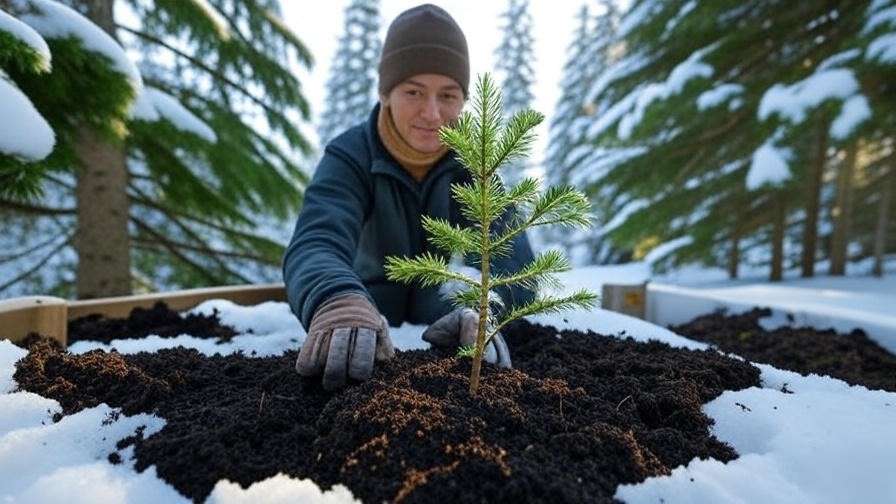
H2: Essential Care Tips for Alaska Trees 🧑🌾
Once planted, Alaska trees need consistent care to thrive in the state’s harsh conditions. Here’s how to keep them healthy.
H3: Watering in a Cold Climate
Watering Alaska trees requires balance. In summer, water newly planted trees weekly, providing 1–2 inches of water, adjusted for rainfall. Use a soaker hose for deep root hydration. In winter, trees enter dormancy and need little water, but check for dry spells in early fall. Overwatering in poorly drained soils can lead to root rot, especially for species like white spruce.
H3: Fertilizing for Nutrient-Poor Soils
Alaska’s soils often lack nutrients, so fertilizing is key. Use a balanced, slow-release fertilizer (e.g., 10-10-10) in early spring before new growth starts. Apply according to package instructions, typically 1–2 pounds per tree, depending on size. Avoid fertilizing in late summer to prevent new growth that won’t harden before winter.
Warning: Over-fertilizing can burn roots, so always follow soil test recommendations or consult a local nursery.
H3: Pruning and Maintenance
Pruning keeps Alaska trees healthy and shapely. Prune in late winter or early spring during dormancy to:
- Remove dead or damaged branches.
- Shape young trees for strong structure.
- Thin crowded branches to improve air circulation.
Use clean, sharp tools to avoid spreading disease. For large trees, hire a certified arborist to ensure safety.
H3: Winter Protection Strategies
Alaska’s winters are brutal, so protect trees with:
- Trunk Wrapping: Use burlap or tree wraps to prevent frost cracks and sunscald, especially on young trees.
- Mulching: Apply 4–6 inches of mulch around the base to insulate roots.
- Snow Management: Gently brush heavy snow off branches to prevent breakage.
Example: A Fairbanks homeowner saved their young spruce trees from frost damage by wrapping trunks and mulching heavily, following advice from the Alaska Division of Forestry.

H2: Common Pests and Diseases Affecting Alaska Trees 🐛
Alaska’s harsh climate doesn’t exempt trees from pests and diseases. Understanding these threats and how to manage them is crucial for keeping your Alaska trees healthy.
H3: Identifying Threats
The most significant pest in Alaska is the spruce bark beetle (Dendroctonus rufipennis), which has devastated millions of acres of spruce forests, according to the Alaska Division of Forestry. Signs include:
- Small holes in the bark with sawdust-like frass.
- Pitch tubes (resin oozing from entry points).
- Yellowing or reddening needles, indicating tree stress.
Fungal diseases, like root rot caused by Armillaria species, are also common in wetter regions like Southeast Alaska. Symptoms include stunted growth, wilting, and mushrooms at the tree base. Other issues include needle cast diseases, which cause premature needle drop, particularly in spruce.
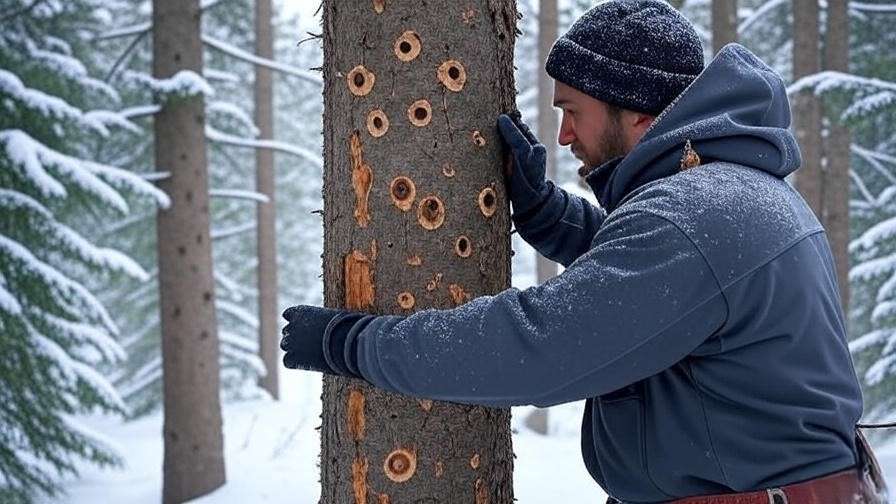
H3: Eco-Friendly Pest Control
Preventing and managing pests sustainably protects both your trees and Alaska’s ecosystem. Try these methods:
- Monitoring: Regularly inspect trees for early signs of beetle activity or fungal growth. The Alaska Cooperative Extension Service recommends spring and fall checks.
- Cultural Practices: Keep trees healthy with proper watering and fertilizing to boost natural defenses. Remove deadwood promptly to deter beetles.
- Natural Predators: Encourage woodpeckers and other beetle-eating birds by installing birdhouses near trees.
- Organic Treatments: Use neem oil or insecticidal soap for minor infestations, following label instructions. For severe beetle outbreaks, consult a professional for targeted treatments like pheromone traps.
Expert Insight: The Alaska Division of Forestry reports that proactive thinning of dense spruce stands can reduce beetle infestations by improving air circulation and tree vigor.
H2: Landscaping with Alaska Trees: Design Ideas for Beauty and Function 🌸
Alaska trees can transform your property into a stunning, functional landscape. Whether you’re aiming for privacy, wind protection, or aesthetic appeal, thoughtful design makes all the difference.
H3: Creating Windbreaks and Privacy Screens
Alaska’s strong winds, especially in coastal areas like Kodiak or Juneau, can damage trees and gardens. Planting windbreaks using hardy species like white spruce or Siberian larch can shield your property.
- Layout: Plant trees in staggered rows, 10–15 feet apart, to maximize wind deflection.
- Species Selection: Combine fast-growing evergreens (like spruce) with deciduous trees (like birch) for year-round protection and visual interest.
- Maintenance: Prune lower branches to maintain clear sightlines while preserving the windbreak’s density.
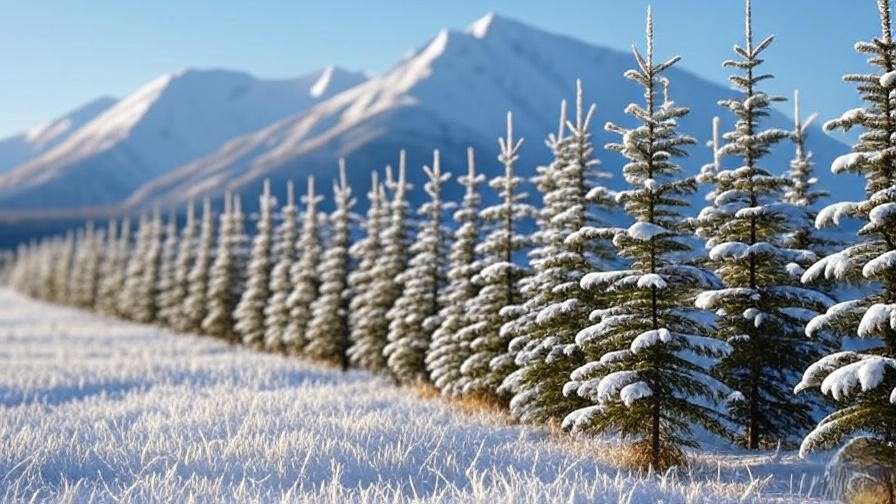
H3: Ornamental Uses
Alaska trees can elevate your landscape’s beauty. For small yards, plant a single paper birch as a focal point, its white bark glowing against Alaska’s snowy backdrop. In larger spaces, group Sitka spruce or black spruce for a forested effect. Pair trees with native shrubs like dwarf arctic willow or wild roses for a cohesive, low-maintenance design.
- Design Tip: Use mulch or gravel pathways to highlight tree bases and create clean lines.
- Inspiration: A Homer, Alaska, homeowner created a stunning backyard by planting a mix of paper birch and wildflowers, attracting local pollinators and earning neighborhood admiration.
H3: Supporting Local Wildlife
Native Alaska trees support biodiversity by providing food and habitat. Paper birch and spruce attract birds like chickadees and woodpeckers, while their seeds feed small mammals. Planting native species also preserves Alaska’s ecological balance.
- Wildlife Tip: Add berry-producing shrubs like highbush cranberry near trees to create a wildlife-friendly yard.
- Example: A Fairbanks community garden used white spruce and native shrubs to create a haven for migratory birds, boosting local biodiversity.
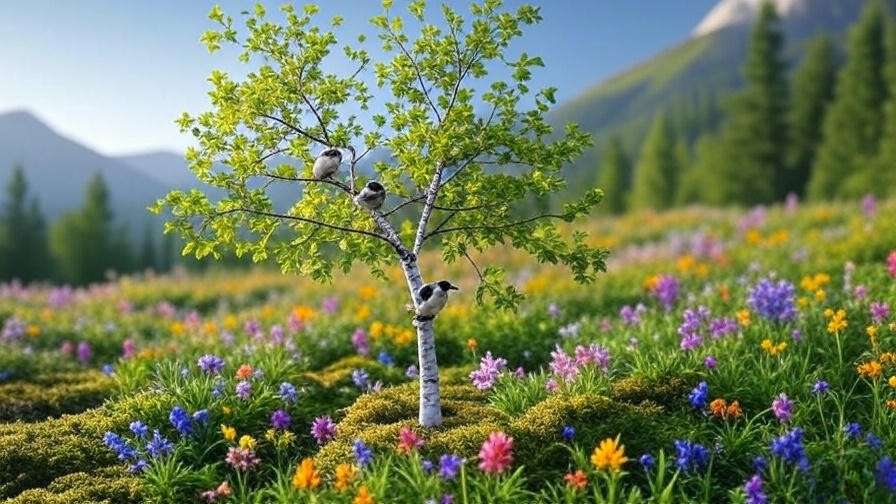
H2: Troubleshooting Common Alaska Tree Problems 🔧
Even with the best care, Alaska trees can face challenges. Knowing how to diagnose and address issues early can save your trees.
H3: Signs Your Tree Is Struggling
Watch for these warning signs:
- Yellowing Needles: Often indicates nutrient deficiency or overwatering. Test soil and adjust care.
- Stunted Growth: Could signal compacted soil, poor drainage, or pest damage.
- Leaning Trunks: Suggests weak roots or wind stress, common in newly planted trees. Stake young trees for support.
Conduct a thorough inspection: check for pests, test soil moisture, and assess environmental factors like shade or wind exposure. Early intervention is key to recovery.
H3: When to Call a Professional
Some issues require expert help. Contact a certified arborist if you notice:
- Severe pest infestations (e.g., widespread bark beetle damage).
- Large branch dieback or structural instability.
- Signs of advanced disease, like extensive root rot.
Find certified arborists through the Alaska Community Forestry Program or the International Society of Arboriculture. Regular inspections by professionals can prevent costly removals.
Tip: Schedule annual tree checkups, especially for valuable or mature trees, to catch problems early.
H2: FAQs About Alaska Tree Care ❓
Q: Can I grow fruit trees in Alaska?
A: Yes, hardy varieties like crabapples (Malus spp.) and certain plum hybrids thrive in Zones 2b–4. Protect them with mulch and wraps in winter.
Q: How do I protect young trees from moose?
A: Install sturdy fencing (at least 6 feet tall) or use commercial moose repellents. Wrapping trunks with wire mesh also deters browsing.
Q: What’s the best mulch for Alaska trees?
A: Organic mulch like wood chips or bark retains moisture and insulates roots. Apply 2–4 inches, keeping it 2 inches from the trunk.
Q: How often should I water newly planted trees?
A: Water weekly in summer, providing 1–2 inches of water, adjusted for rainfall. Use a soaker hose for deep watering.
H2: Conclusion: Grow Thriving Alaska Trees with Confidence 🌟
Growing Alaska trees is both a challenge and a rewarding journey. By choosing hardy species like black spruce or paper birch, planting strategically, and following expert care tips, you can cultivate trees that thrive in Alaska’s rugged climate. From protecting against winter frost to managing pests like spruce bark beetles, this guide equips you with the knowledge to succeed. Start your tree care journey today—visit a local nursery, test your soil, or share your experiences in the comments below. Together, let’s preserve Alaska’s natural beauty with healthy, vibrant trees! 🌲

